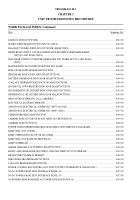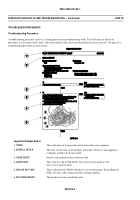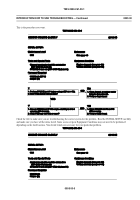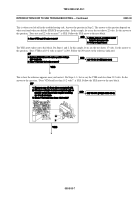TM-9-2350-261-20-1 - Page 102 of 346
TM 9-2350-261-20-1
INTRODUCTION HOW TO USE TROUBLESHOOTING
0005 00
PURPOSE
The purpose of unit troubleshooting is to diagnose carrier problems which are reported to unit maintenance. You should
not begin unit troubleshooting until
ALL
operator troubleshooting procedures have been performed. You will perform
four actions in unit troubleshooting:
(1) Before starting a troubleshooting task, verify that the reported problem is present.
(2) After verifying the symptom, find the part that is causing the problem.
(3) Replace or adjust that part.
(4) Check to make sure the problem no longer exists, and that there are no other problems.
DEFINITIONS AND DESCRIPTIONS OF TROUBLESHOOTING PROCEDURES
Troubleshooting tasks always have a beginning and an end. You will use task steps, test procedures, indexes, maintenance
tasks, and other technical manuals to troubleshoot. Troubleshooting uses the following terms that are not used in other
kinds of tasks:
1. FAULT:
The part that is not operating correctly and is causing the problem.
2. SYMPTOM:
The problem reported to unit maintenance.
3. STE/ICE:
Diagnostic and test equipment used to troubleshoot at unit maintenance level. It is
used to make measurements and find faulty parts in the carrier system.
4. VERIFY NO FAULTS
FOUND:
After you have completed the corrective action, you must verify that no faults exist.
If the fault condition still exists, then the fault is not fixed or there is another fault.
If this happens, start at the beginning of the troubleshooting procedure until you
find and correct all faults. Always operate the system and/or carrier to make sure
that you have corrected the reported problem. If troubleshooting does not identify a
faulty part, the carrier is defective beyond the level of unit maintenance.
000500-1
Back to Top




















